
Hockley Heath is a large village and civil parish in the Arden area mostly within the Metropolitan Borough of Solihull, West Midlands, England, incorporating the hamlet of Nuthurst, with a history dating back to the year 705 AD as a wood owned by Worcester Cathedral. The parish, known as Nuthurst cum Hockley Heath, is to the south of the West Midlands conurbation, 12 miles (19 km) southeast of Birmingham 5.5 miles (8.9 km) from Solihull town centre and 12.5 miles (20.1 km) north of Stratford-upon-Avon. The village forms part of the border with Warwickshire and the District of Stratford-on-Avon to the south, with some parts of the village on either side of the border. According to the 2001 census, the parish had a population of 6,771, being measured at the 2011 Census as 2,038.
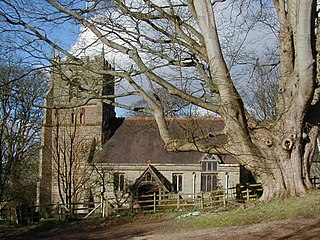
Beoley is a small village and larger civil parish north of Redditch in the Bromsgrove District of Worcestershire. It adjoins Warwickshire to the east. The 2001 census gave a parish population of 945, mostly at Holt End. The parish includes the hamlet of Portway, adjacent to the A435 road. It adjoins the Redditch suburb of Church Hill and the civil parishes of Alvechurch, Tanworth-in-Arden, Mappleborough Green and Wythall.

Compton Verney is a parish and historic manor in the county of Warwickshire, England. The population taken at the 2011 census was 119. The surviving manor house is the Georgian mansion Compton Verney House.

Offchurch Bury is a manor house one mile north-west of the centre of the village of Offchurch, Warwickshire, England. It is supposed to represent the site of a palace of the Anglo-Saxon King Offa of Mercia (d.796), after which Offchurch is named, "bury" being a corruption of "burh" meaning a fortified place. William Dugdale in his Antiquities of Warwickshire (1656) stated concerning the manor of Offchurch:
Hothorpe Hall, in Northamptonshire, is a Georgian manor house near Market Harborough. It lies in the parish of Marston Trussell in Northamptonshire but is close to Theddingworth in Leicestershire. The hall is currently used as a conference centre and wedding venue.
This is a list of sheriffs and high sheriffs of the English county of Warwickshire.

Sir Thomas Holte, 1st Baronet was an English landowner, responsible for building Aston Hall, in the parish of Aston in Warwickshire. The "Holte End" stand of Villa Park, the stadium of Aston Villa Football Club, sits on land originally part of the Aston Hall gardens and is named after Thomas Holte. The area also has a Holte School and Holte Road.

Lower Shuckburgh is a small village in eastern Warwickshire. It lies within the civil parish of Upper and Lower Shuckburgh, which in the 2001 census had a population of 82.
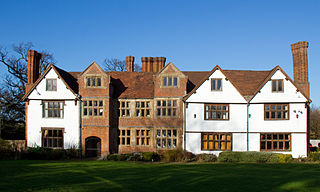
Sheldon Hall is an early 16th-century Grade II* listed manor house located on Gressel Lane in the Tile Cross/Kitts Green area of Birmingham, England, consisting of a main block of two stories and attics built of red and black bricks with stone dressings. The city boundary runs along the eastern side of the property. The building is now used as a restaurant.

Umberslade Hall is a 17th-century mansion converted into residential apartments situated in Nuthurst near Tanworth in Arden, Warwickshire. It is a Grade II* listed building.
There have been two baronetcies created for members of the Boughton, later Rouse-Boughton family, one in the Baronetage of England and one in the Baronetage of Great Britain.
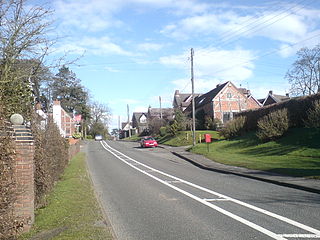
Claverdon is a village and civil parish in the Stratford-on-Avon district of Warwickshire, England, about 5 miles (8.0 km) west of the county town of Warwick. Claverdon's toponym comes from the Old English for "clover hill". The hill is near the centre of the scattered parish which included the township of Langley to the south, and formerly comprised the manors of Claverdon, Langley, Kington, and Songar.

Elizabeth de Vere, Countess of Oxford was an English noblewoman. As a young child she became a royal ward.

Brownsover Hall is a 19th-century mansion house in the old village of Brownsover, Rugby, Warwickshire which has been converted for use as a hotel. It is a Grade II* listed building.
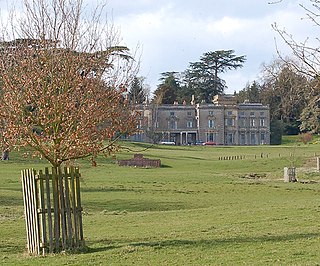
Shuckburgh Hall is a privately owned country house mansion at Lower Shuckburgh, Warwickshire, near to Daventry in Northamptonshire.
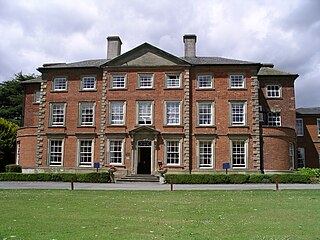
Ansty Hall is a 17th-century country house, located in the village of Ansty, and near Coventry and Rugby, Warwickshire, which is now a four star hotel operated by Macdonald Hotels Ltd. It is a Grade II* listed building surrounded by 8 acres of landscaped gardens.
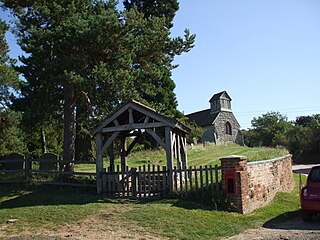
Morton Bagot is a small village in the Stratford-on-Avon District of Warwickshire, England. It lies about 1.5 miles (2 km) east of the Birmingham-Alcester road, the modern A435 and Roman road Ryknild Street, 6.5 miles (10 km) north of Alcester, 9.5 miles (15 km) from Stratford-upon-Avon and 12 miles from Warwick, across the valley of a small brook, flowing south-east to join the River Arrow.
William Jesson was an English dyer and politician who was active in local government in Coventry and sat in the House of Commons between 1640 and 1648.
Charlotte Rich, Countess of Warwick (1680–1731), formerly Lady Charlotte Myddelton, was an English noblewoman. She was the wife of Edward Rich, 6th Earl of Warwick. Her second husband was the satirist Joseph Addison.

















